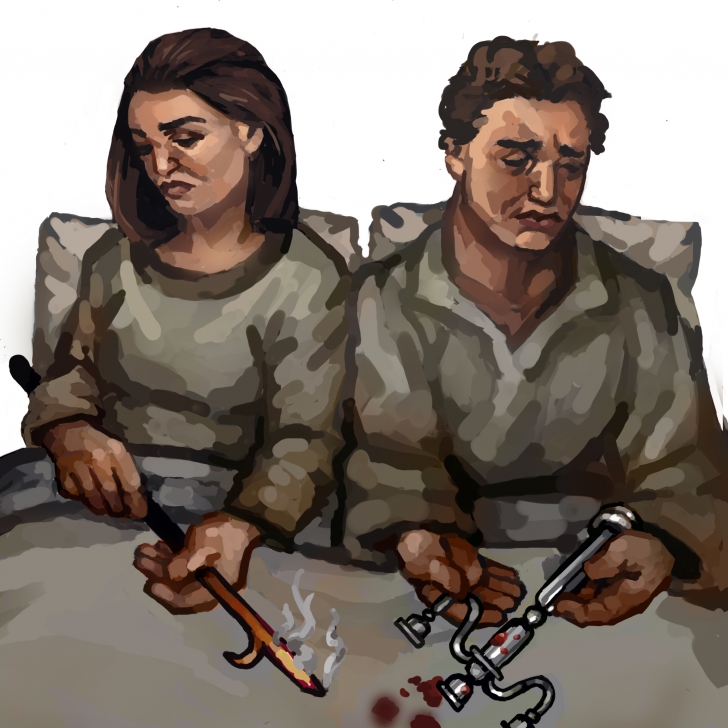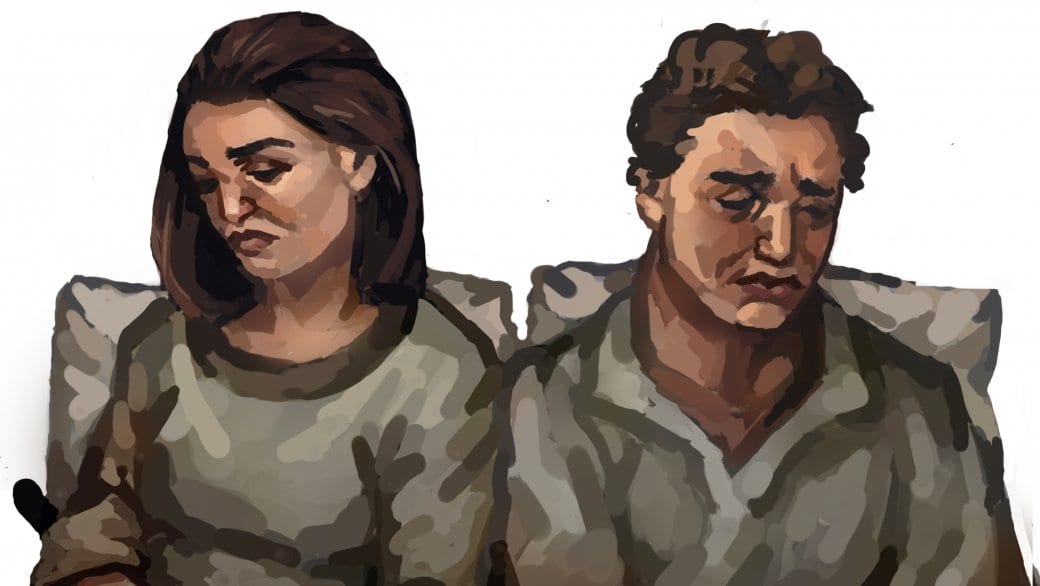The impotent Florentine and the horse fancier
Gian Gastone de’Medici endured many miserable years at Ploskovince Castle. His family, desperate to generate heirs, married him off to a particularly unpleasant German woman, Princess Anna Maria Franziska of Saxe-Lauenburg, who hated all things urban and sophisticated. She insisted they live in her dilapidated castle in frozen Bohemia rather than at Gian’s much more pleasant home in Florence.
He married Anna Maria in 1697. She hated him, and he her. Actually, he hated all women, but things could hardly have been better if he were straight. She was famously described as being “of enormous weight, immense self-will and no personal attractions.” He was almost as ugly and drank excessively.
She hauled him back to her rural home as soon as the wedding was over. Instead of making babies, they quickly settled into a grim routine that they would maintain for over a decade: she would spend most of her time in the stables talking to her horses, and he would spend his days drunk and depressed, occasionally sneaking away to Prague to sleep with men.
In 1707, Gian’s father, Cosimo III, Grand Duke of Tuscany, deciding he needed Gian by his side and sent the Archbishop of Prague to try to convince Anna Maria to move back to Florence with Gian. She responded that it would be pointless because Gian was “absolutely impotent.” Cosimo gave up on an heir and recalled Gian to Florence the following year. He never saw his wife again.
When Cosimo died, Gian became Grand Duke of Tuscany. Gian’s failure to produce an heir meant that his own death in 1737 was also the end of the Medici’s nearly 300-year rule in Florence.
(For more on the Medici, click here.)

The imprudent king and the she-wolf
She must have had misgivings after what happened at Dover. In 1308, King Edward II returned to England after marrying the French king’s daughter, Isabel. It’s hard to say how much the 12-year-old girl understood, but I imagine she was at least a little perturbed by seeing her new husband passionately kissing the man who came to welcome them at the port.
I doubt the English onlookers were surprised — the King had loved Piers Gaveston since they were boys. His infatuation had weathered the disapproval of his father (who ripped Edward’s hair out because of it) and the English nobles — he’d heaped titles on the relatively lowborn Gaveston, despite their protests.
But Isabel was learning about her husband’s proclivities for the first time. Next, Edward spent much of her coronation gawking at, and hanging off of, Gaveston. It caused her royal relatives to leave the feast. If losing a clump of hair hadn’t deterred him, the disapproval of a few huffy uncles wasn’t going to do much.
Isabel arguably got her revenge years later. The angry English nobles had long since captured and killed Gaveston, but Edward had found new ways to annoy them, losing battles and poorly choosing his advisors. It was easy for Isabel to rally the nobles against him.
Thoroughly earning the nickname “the she-wolf of France,” she had him dethroned and imprisoned. Her actions led to his gruesomely symbolic execution in 1327 — they shoved a red-hot poker up his ass.
(For more on King Edward II, click here.)
The jumped-up Torontonian and the socialite
I’ll give Wayne Lonergan this: he was a cinematic murderer. There’s something about bludgeoning your heiress wife with a silver candelabra in a posh New York City townhouse in the 1940s that screams “film noir.” And it’s not just me — the murder inspired Kenneth Fearing’s 1946 novel The Big Clock, which was subsequently made into a silver-screen thriller of the same name.
He was probably introduced to Patricia by her father, millionaire William Burton. Burton was Lonergan’s sugar daddy. They met in the summer of 1939 when, for a lark, the 21-year-old Torontonian was down in New York City pulling rickshaws at the World’s Fair. Burton was dead a year later, and Lonergan was married to his daughter a year after that.
They spent many of their nights apart — she with handsome men in nightclubs, and he with various wealthy male “patrons.” Lonergan seems to have been bisexual, but by 1943, only two years after their wedding, Patricia had cut him out of her will and was probably filing for separation. He huffily returned to Canada and joined the Royal Canadian Air Force.
It’s hard to know precisely what happened the day of the murder. On Oct 23, 1943, Lonergan flew back to New York City to visit his son. At 8am the following day, he arrived at his 22-year-old wife’s Beekman Hill residence. They were, for some reason, naked. He choked her. He then finished the job with the candelabra, leaving her dead in an antique bed.
His motive is unclear, but he later said she’d inflicted “great physical pain” on him.
(For more on Wayne Lonergan, click here.)
(History Boys appears on Daily Xtra on the first and third Tuesday of every month. You can also follow them on Facebook.)


 Why you can trust Xtra
Why you can trust Xtra


